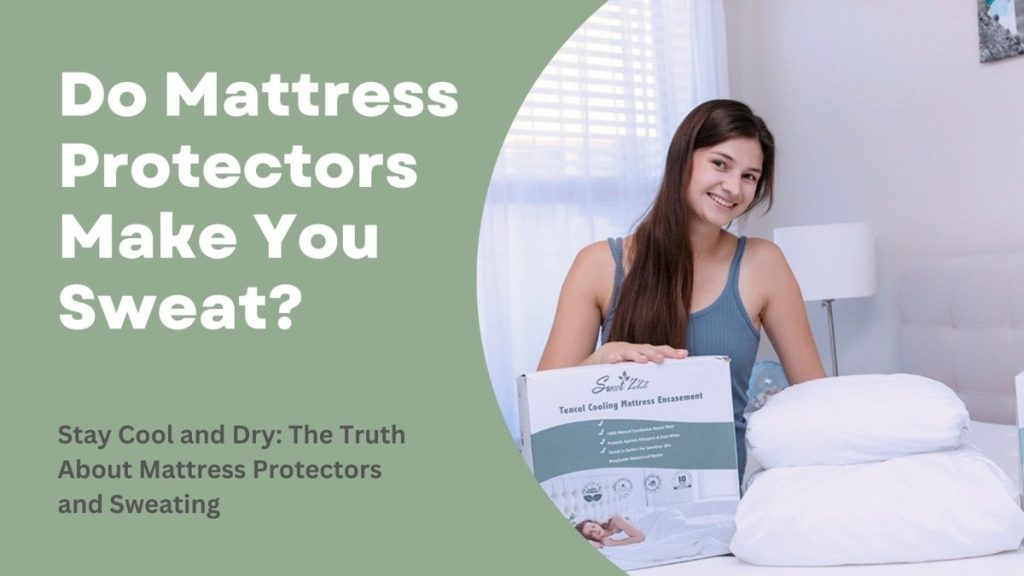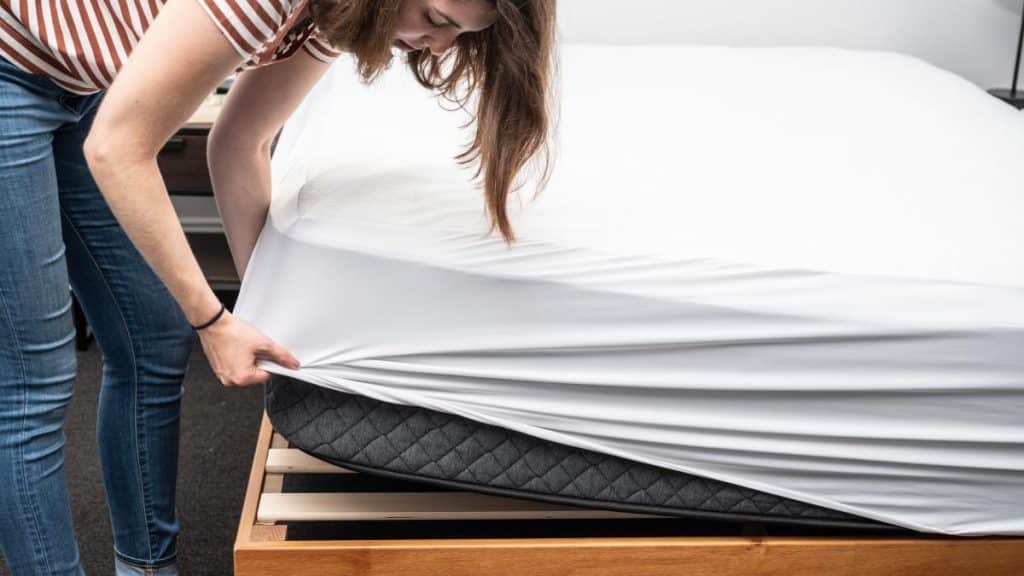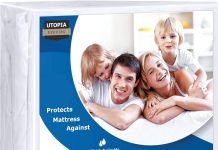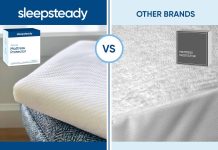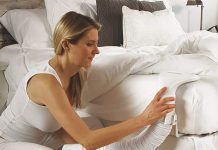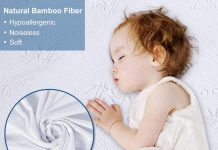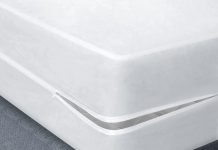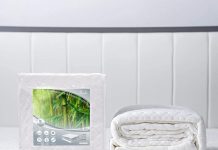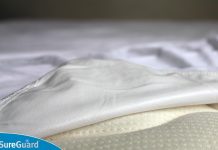Curious about the impact of mattress protectors on our sleep quality, we set out to investigate a burning question: are mattress protectors hot to sleep on? Ensuring the longevity and cleanliness of our beloved mattresses is important, but the last thing we want is to wake up drenched in sweat. Today, we uncover the truth behind these often overlooked bedding accessories and shed light on whether they can truly keep us cool and comfortable throughout the night.
Review contents
The Impact of Mattress Protectors on Sleep Temperature
When it comes to achieving a comfortable night’s sleep, the temperature of our sleeping environment plays a crucial role. Many factors can affect sleep temperature, including the type of mattress protector we choose. Mattress protectors serve as a barrier between our bodies and the mattress, providing protection against spills, allergens, and wear and tear. However, they can also impact the temperature regulation of our beds. In this article, we will explore the different types of mattress protectors and their materials, as well as the factors that influence sleep temperature and the role of mattress filling materials. We will also delve into how user experience and heat dissipation play a role in our overall sleeping comfort.
Types of Mattress Protectors and Their Materials
1.1 Waterproof Mattress Protectors
Waterproof mattress protectors are designed to protect our mattresses from spills, accidents, and liquid damage. These protectors are typically made with materials that are impermeable to liquids, such as polyurethane or vinyl. While they offer excellent protection, they can sometimes trap heat due to their non-breathable nature.
1.2 Allergy-Proof Mattress Protectors
For those who suffer from allergies, allergy-proof mattress protectors are a popular choice. These protectors are made with tightly woven fabrics that prevent dust mites, pet dander, and other allergens from penetrating the mattress. Common materials used in allergen-proof protectors include microfiber or tightly woven cotton. While these protectors are beneficial for allergy sufferers, they can sometimes reduce breathability and trap heat.
1.3 Cooling Mattress Protectors
If you tend to sleep hot, cooling mattress protectors can be a game-changer. These protectors are usually made with moisture-wicking and cooling materials, such as bamboo or phase-change materials. They are designed to regulate body temperature by dissipating heat and allowing for proper airflow. Cooling mattress protectors are ideal for those who want to sleep cool and comfortable throughout the night.
1.4 Natural Fiber Mattress Protectors
For eco-conscious consumers, natural fiber mattress protectors are a perfect choice. These protectors are made with organic materials such as organic cotton, wool, or bamboo. Natural fiber protectors are known for their breathability, moisture-wicking properties, and temperature regulation capabilities. They offer a comfortable and sustainable option for a good night’s sleep.
1.5 Conventional Mattress Protectors
Conventional mattress protectors are typically made with a blend of synthetic materials such as polyester or nylon. They are affordable and widely available but may lack the breathability and heat regulation capabilities of other types of protectors. While they provide basic protection and can be a suitable option for some, they may not be the best choice for those who prioritize temperature regulation during sleep.
Factors Influencing Sleep Temperature
Understanding the factors that influence sleep temperature is essential when choosing a mattress protector. Here are some key factors to consider:
2.1 Breathability of Materials
The breathability of mattress protector materials determines how well air can circulate through them. Breathable materials allow for proper ventilation and heat dissipation, preventing the build-up of heat during sleep. Natural fibers such as cotton or bamboo are known for their breathability, while synthetic materials like vinyl or polyester tend to be less breathable.
2.2 Moisture-Wicking Properties
Moisture-wicking properties are crucial for regulating sleep temperature. Fabrics that can efficiently draw moisture away from the body help keep us cool and dry throughout the night. Look for mattress protectors with moisture-wicking capabilities, as they can enhance comfort and prevent the feeling of stickiness or excessive heat.
2.3 Thermal Regulation Features
Some mattress protectors are specifically designed with thermal regulation features to help maintain a comfortable sleep temperature. These features can include phase-change materials that absorb and release heat as needed, or special fabrics with cooling properties. Considering the thermal regulation capabilities of mattress protectors can greatly impact our overall sleeping experience.
This image is property of sweetzzzmattress.com.
Heat Retention and Mattress Protectors
The composition and materials used in mattress protectors can significantly affect their heat retention properties. Let’s explore the differences between polyester and cotton protectors:
3.1 Polyester Mattress Protectors
Polyester mattress protectors are known for their durability and affordability. However, they tend to have lower breathability compared to natural fiber alternatives. Polyester is a synthetic material that can trap heat and moisture, potentially resulting in a warmer sleeping environment. While polyester protectors offer adequate protection, those who prioritize cooler sleep may want to consider other options.
3.2 Cotton Mattress Protectors
Cotton mattress protectors are a popular choice due to their natural breathability and softness. Cotton allows for better airflow and ventilation, promoting a cooler sleep experience. It is a natural fiber that can effectively wick away moisture, preventing the buildup of heat and humidity. Cotton protectors are often recommended for those who sleep hot and desire optimal temperature regulation.
The Role of Filling Materials
In addition to the outer fabric, the filling materials of a mattress protector can also impact its heat retention properties. Let’s explore some common filling materials and their relationship with sleep temperature:
4.1 Memory Foam Fillings
Memory foam fillings are known for their contouring and pressure-relieving properties. While memory foam can provide excellent comfort, it is also notorious for its heat retention capabilities. Memory foam tends to absorb and retain body heat throughout the night, potentially leading to a warmer sleep experience. For those who sleep hot, opting for a mattress protector without memory foam fillings may be beneficial.
4.2 Down Fillings
Down fillings, often found in luxury mattress toppers or protectors, provide a plush and cozy sleeping experience. However, down fillings can also trap heat and reduce breathability. They may be more suitable for individuals who prefer a warmer sleep environment or live in colder climates.
4.3 Polyester Fiber Fillings
Polyester fiber fillings are commonly used in mattress protectors to provide an additional layer of cushioning. While polyester fiber can offer comfort, it may also contribute to heat retention. Polyester is not as breathable as natural fibers and can impede proper airflow. If temperature regulation is a priority, considering mattress protectors without polyester fiber fillings might be advantageous.
4.4 Nanoparticles for Heat Management
In recent years, innovative technologies have emerged to enhance the heat management capabilities of mattress protectors. Nanoparticles are one such example. These microscopic particles can absorb, store, and release heat as needed, contributing to a more balanced sleep temperature. Nanoparticle-infused mattress protectors are designed to offer a cooler and more comfortable sleeping environment.
This image is property of reviewed-com-res.cloudinary.com.
User Experience and Heat Dissipation
Apart from the materials and filling used in mattress protectors, the user experience and heat dissipation are essential factors to consider for optimal sleep temperature regulation. Let’s explore these aspects:
5.1 Air Circulation and Heat Dissipation
Proper air circulation and heat dissipation are vital for maintaining a comfortable sleep temperature. Mattress protectors with features like perforations or vents can facilitate improved airflow, preventing the build-up of heat and moisture. These design elements allow for effective heat dissipation, enabling us to sleep cool and sweat-free.
5.2 Perforated Mattress Protectors
Perforated mattress protectors feature small holes or perforations in the fabric, enhancing breathability and promoting airflow. These protectors allow for better heat dissipation and ventilation, leading to a cooler sleeping experience.
5.3 Ventilated Mattress Protectors
Ventilated mattress protectors are designed with specific channels or grooves to promote air circulation and heat dissipation. The air can flow freely through these channels, preventing the accumulation of heat and moisture. Ventilated protectors are an excellent choice for those who value a cool and refreshing sleep environment.
User Feedback on Sleeping Temperature
Considering user feedback on mattress protectors’ impact on sleep temperature can provide invaluable insights. Reading reviews and experiences of other individuals can help us make more informed decisions. Here are some areas to explore:
6.1 Reviews for Different Types of Mattress Protectors
Reading reviews for different types of mattress protectors can help us understand how they perform in terms of temperature regulation. Users often share their experiences with specific protectors and whether they felt cooler or warmer during sleep. This feedback can contribute to our decision-making process when selecting a mattress protector.
6.2 Personal Preferences on Sleep Microclimate
Personal preferences on sleep microclimate can vary widely. Some individuals naturally sleep hot and may prefer cooling mattress protectors, while others may find warmth to be more comforting. Understanding our own preferences and needs plays a significant role in finding the ideal mattress protector for maintaining a comfortable sleep temperature.
In conclusion, mattress protectors have a significant impact on sleep temperature. The type, material, and design of a mattress protector can all influence how hot or cool our sleeping environment becomes. By considering factors such as breathability, moisture-wicking properties, thermal regulation, and heat dissipation, we can choose a mattress protector that meets our individual needs and ensures a comfortable and restful night’s sleep.
This image is property of sleep.brightspotcdn.com.


